
GDN Consulting Firm | Management & Technology
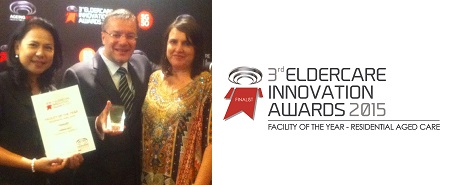
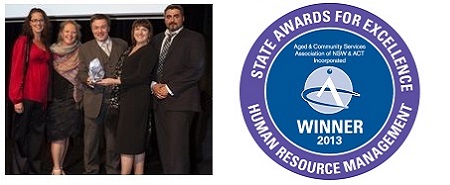

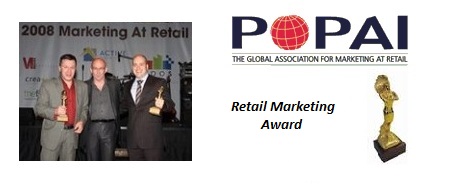
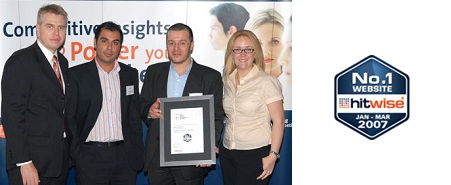
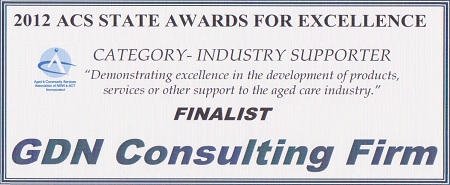
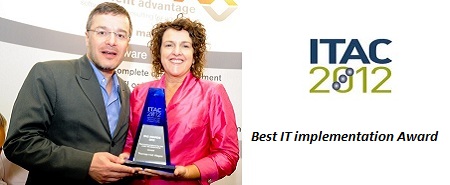
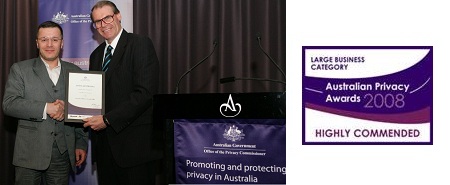
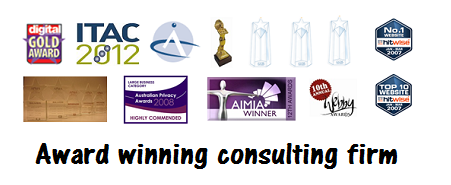
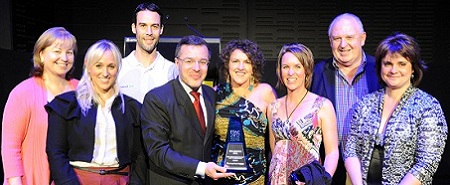
RESOURCES
This free resources page gives you access to some of the GDN Consulting Firm's answers to clients' enquiries, as well as blogs, keynote addresses and papers across a range of topics.This material is loosely organized by core themes, functional areas or disciplines; it is by no means exhaustive yet should provide you with sufficient background for your own initiatives, as well as insights on the GDN Consulting Firm's modus operandi and specialization backbones:
Core themes
1. Environment (Biosphere) and Population (Anthroposphere)
2. Sustainable economy and best practices
3. Organizational cultures and models
4. Governance and risk management
5. Talent resources management
6. Branding and marketing
7. Sales and operations
8. Other resources
OTHER RESOURCES
RESOURCES - 2014 ACS Technology UpdateRESOURCES - 2015 The Big Picture on nano
eCommerce
Digital marketing
Content management
Training
SDLC | Agile | MOM
On-demand CIO | CTO
Business | Technical analysis
Project | Change management
Business plan
Strategic roadmaps
On-demand Executives
Tender selection
Tender submissions
RFP | RFT preparation
Governance | CSR
Outsourcing | Rightsizing
Organizational architecture
Click on a question below to reveal its answer.
1.1 | What is the maximum human population the Earth can sustain?
The figure is actually dynamic.
The Ehrlich / Holdren equation, first proposed in 1971, is a good start to understand the relationship between population size and sustainability. It is formulated as I = PAT with:
- I = Impact of human activity
- P = Human population size
- A = Affluence or average consumption per capita expressed in currency
- T = Technological factor expressed as an emission output (current T value is ~0.5t.CO2 per $1,000 worth of goods & services sold or purchased)
- B = Biosphere size, and
- R = Biosphere regenerative index
While there is much political focus on P and A strategies, considerable untapped opportunities exist with:
- T (example: negative T objectives in areas such as biotech or renewable energy)
- R (biotech, conservation)
- B (conservation strategies but also urban redesign, vertical metropolitan development vs horizontal/urban sprawl, traffic decongestion, economic dematerialization, the crucial area of vertical farming, space exploration and so forth).
1.2 | Will it take several planets to sustain our resource consumption needs by the year 2030 or beyond?
According to key stakeholders such as Bjørn Lomborg, Andrew Simms (Policy Director of London-based NEF-New Economics Foundation) and other expert sources, planet Earth has been running a loss-making P&L in sustainability terms since the mid-80's.
Looking at a pool of key environmental assets and resources, every year since that time, humanity has been consuming more than the biosphere can possibly regenerate, effectively tapping into planet Earth's balance sheet equity. In 2008, this global deficit reached (-27.1%) growing from (-25.8%) the year before. In other terms, in 2008, humanity has consumed the equivalent of ~1.3 times what Earth can sustain. While this figure seems enormous, it is based on an averaged global lifestyle. It would actually be circa (-200%), i.e. 3 x Earths, if everyone on the planet would be living a UK lifestyle, or (-400%), i.e. 5 x Earths, for a US lifestyle.
Crisis and challenges, like this one and others, are platforms to reinvent everything, a source of opportunities and the foundation for innovative social and economic paradigms.
1.3 | What is the best renewable energy source for the future?
Recently, Eric Chaisson (Tufts University, MA) eloquently summarised the global energy situation and highlighted a possible way forward:
- Our current global energy daily consumption is ~18 terawatts
- By the end of the 21st century, this energy demand will exceed 100 terawatts
- Each day, the sunlight landing on Earth’s surface amounts to 120,000 terawatts or ~7,000 times the power currently used by ALL humans
2.1 | How do we decouple our economy from unsustainable growth and runaway consumption?
If we accept that our global sustainability crisis starts with a profound dichotomy between economy and ecology, we’d agree there is currently an opportunity to address it at its very root, i.e. the common representation of value: currency.
Such trouble-shooting opportunity would ensure continuity with existing monetary systems, hence avoid more radical changes and implementation challenges (such as the radical ones that ecological economics would bring) or lessen large disruptions in the way today’s markets generally function.
The opportunity is to establish an environmentally-suitable redeemable currency (with most used denominations such as US$ or RMB arguably best candidates for this as other currencies would already refer back to them).
Most of us live today in an irredeemable world. Most currencies are de-linked from any tangible reference commodity. This so-called fiat money regime disrupts the balance between anthroposphere and biosphere by promoting the illusion of a possible continuous economic growth with poor consideration for the depletion of fast-vanishing environmental assets.
There is hardly anything new with this:
- For over 500 years, from 900 to 1455, China experienced a hyper-inflationary cyclic debacle after adopting the first-ever fiat money system that eventually had to be abandoned
- In his 1911 book “The purchasing power of money”, Irving Fisher forewarned us writing “irredeemable money has almost invariably proved a curse to the country employing it”
- Yet, since then, financial bubbles & bursts have raged from the 1930’s German monetary system collapse up to present times with our 35-years-in-the-making (since the 1971’s Nixon Shock departure from the Gold standard) and still unfolding credit crunch global crisis.
An environmentally-suitable redeemable currency could refer to a standard such as a Unit of Sustainable Biosphere determined either by rating a pool of key environmental assets (fresh water, air, natural resources, energy, etc) or derived from the I = P.A.T Ehrlich / Holdren equation. The system would introduce interesting environmental dynamics, shifting (from the inside out) monetary strategies from environmentally-sterile topics such as inflation, deflation, exchange & interest rates, suitable size of monetary mass & quantitative easing, to an undivided focus on continuous sustainable equilibrium between anthroposphere and biosphere.
The implementation of such system is a challenging task requiring the top-down equivalent of a new Bretton-Woods: recent post-GFC G20 meetings, with agitated discussions around such themes, have shown the difficulties for such proposals to emerge from a global political consensus. They may still materialize via global market avenues such as novel disruptive digital economy and commercially-driven alternative frameworks.
2.2 | How to effectively build the sustainable cities that architects & city planners attempt to create?
Sound urban planning strategies are crucial in tackling our global sustainability crisis, as more people live now in cities (3.3b in 2008 and 5b forecast within 25 years) than in rural areas.
A first step would be to organize a multi-disciplinary, multi-cultural and multi-modal platform involving urban planners, architects, economists, entrepreneurs, health practitioners, social researchers, psychologists, police stakeholders, innovative transport experts and other academic, institutional, research, corporate and non-profit stakeholders to compile the latest trends on policies, and implementation methods. Developing economies could easily take the lead as both carbon emissions and urbanization levels are still relatively low in these areas, with opportunities to start on the right foot from a relatively blank page.
Master plans’ scope should include the city’s surroundings and long-term demographic forecasts. It should highlight the city’s cultural, historical, environmental and economic identity for continuity purpose and buy-in from public and private stakeholders involved with planning stages. Location analysis should cover long-term sea level rising and desertification scenarios.
A sustainable balanced modelling mantra should be sought, could be derived from the 1971 Ehrlich / Holdren equation. The strengths of the (BR-PAT) model lie in its relative simplicity and fractal nature: with such mantra, focus would be on balancing biosphere regeneration (BR) with anthroposphere consumption (PAT), dynamically modeling forecasts for demography (P), technology (R, T), economy (A) and environment (B).
Planning approaches should be systemic, analysing cities as whole organisms structured around interlaced functions (housing, trading, transport, education, health, communication, entertainment) with each functional component depending on the whole. For example, with transport, minimizing overall distance travelled or maximizing overall speed of travel (at odds with common ill-conceived back-firing speed demonization policies) would impact housing and trading configuration and subsequent zoning policies. With trading, economic dematerialization & virtual enterprising would influence house building policies (households designed for home-based work or education and high connectivity).
Such approach would promote horizontal compactness (vertical development vs horizontal urban sprawl, integrated vertical farming, high-speed congestion-free public or individual transport systems, car ban in the most central districts, roads and parking minimization) and drive conservation policies for any existing environmental assets within or outside cities.
At lower building planning levels, sustainable R & T objectives would materialize through adoption of smart low-carbon building design including on-site energy production (renewable), on-site recycling (water, waste), heritage & existing building re-engineering policies, recycled building materials, green areas integration, communal roof-top and terrace gardens including crucial integrated vertical farming strategies.
Such systemic integrated approach should also emphasize risk management in areas such as health (containment of pandemics), terrorism, criminality and social integration.
2.3 | What is the biggest piece of misinformation about money?
The biggest piece of misinformation about money is that "it measures everything"
In reality, and in its current form, money is a relatively archaic tool doing a poor job in either representing value, or measuring the performance & health of organizations.
To illustrate this with a medical analogy, after a 360° medical health check, no one would ask their GP to translate all results (tomography, radiography, blood tests, blood pressure, weight, height, waistline and so forth) into one-only unit of measure such as temperature.
Yet, in today's corporate and institutional worlds, only one unit of measure, money, underpins and encapsulates all the tools (balance sheet, P&L and cash-flow statements) used to grasp & evaluate sophisticated modern organizations and understand their complex ever-changing metabolism.
The (fragile) foundations of today’s monetary, accounting and finance disciplines have poorly evolved and still mostly rely on centuries-old concepts, tainted by obsolescence, such as:
- 12th century Chin dynasty’s fiat money system
- 15th century Luca Pacioli’s accounting principles
- 17th century Lorenzo Tonti’s national debt idea
2.4 | How does an organization become greener, improve its Triple Bottom Line whilst enhancing efficiencies?
Here's a few possible ways to achieve this:
- Roof-top solar panels or other type of renewable energy sources for premises (business of course, but also public, such as schools and universities generating lateral revenue streams by feeding the grid during holidays)
- Eco-friendly breathable building design that eliminate the need for air conditioning (many examples around the world such as “The Bond” building in Sydney-Australia)
- Shit to eCommerce and drop-shipping commercial frameworks (reducing physical goods movements) and other eco-friendly economic dematerialization strategies
- Accurate forecasting systems that allow longer-term planning, thus enable modal shift to low-carbon transportation (boats, rail Vs planes, trucks)
- Corporate and institutional adoptions of environmental assets, integrated vertical farming and conservation strategies
- Accurate and in-depth physical accounting and budgeting framework, including audited carbon-free schemes
- Use of kinetic energy (our own movements) on any type of mobile devices requiring electrical power
- Closed-loop production cycles (including recyclable programs fully integrated with production)
- Final product assembly localization (move parts in bulk, rather than entire finished products)
- Smart recyclable packaging designed to optimize overall space
- Site waste reduction systems, processes and staff education
- Video conferencing coupled with travel decrease strategies
- Paperless professional environments
- Recycling-conscious product design
- On-site water recycling systems
- Shift to home-based work
- Enterprise virtualization
- Smart urban traffic management systems designed to decongest road networks by working within fluid dynamics frameworks, aiming to increase overall travel speed rather than limit or punish it. In their existing forms, such systems deployment (in Europe & US) have proved to reduce congestion by 15~30% at peak hours. Despite the fact that all the required technology exists, even more effective, integrated & interactive systems (road-to-road, vehicle-to-vehicle and road-to-vehicle) are yet to be implemented: a dramatic cultural change is first required to eradicate ill-conceived, wrongful & back-firing speed demonization policies
- Industry syndication toward co-transportation arrangements
- IP sharing platforms for sustainable systems and processes
2.5 | What key environmental & sustainability metrics should organizations measure and track?
This question is also covered by topics such as industrial metabolism, physical accounting disciplines and deployment frameworks (for example LEED or ISO 14000) as well as integrated bookkeeping solutions for physical accounting requirements, increasingly proposed by leading ERP system providers.
Similarly to financial accounting, environmental sustainability metrics are time-based, summarized into executive dashboard statements that can be drilled-down to variable levels of granularity. Time-periods may vary from an organization to another, depending on how far they are with sustainability, governance, Triple Bottom Line, certification or regulatory requirements.
For a given period, the metrics should provide a holistic representation of all physical (up & down) streams for the entire enterprise organism, allow the organization to set measurable objectives for its sustainability strategy, start tracking progress, key trends and benchmark performance against its own or other industry verticals.
Such physical representation should cover the entire chain from suppliers to clients, the logistics in between, and all operational in or outsourced infrastructures. If the organization is involved in the production of physical goods, the metrics should show the relevant physical figures for the entire lifecycle of all products produced during the reference period, such as forecasted consumption of energy or greenhouse gas emissions over the lifetime of the products.
The metrics should include physical inputs & outputs such as greenhouses gases, energy (consumption or contribution if sustainable resources are used), raw resources (consumption, recycling), water, chemical substances, waste & other streams.
Oppositely to financial accounting (expressed in one unique unit of measure, money), physical accounting metrics use different units of measure (watts or joules for energy metrics, tonnes for emission metrics, litres for water and other liquids, temperature, densities, dimensions, proportions and so forth).
2.6 | How feasible is solar power for the public sector?
As part of an integrated systemic approach (including smart urban planning, smart building design, insulation, recycling, energy & resources saving measures and other renewable sources such as wind, geothermal and other), adopting solar power in the public sector (schools, hospitals, desalination plants, other buildings or public outdoor electrical devices such as digital signage and traffic management equipment), or other sectors for that matter, has tangible advantages.
Yield variations should be expected depending on geographical areas, sun exposition, local climate conditions (cloudy), seasonal site energy usage patterns, cell technology used (conventional, dye-sensitized or other) & related technical conversion rate, availability of a smart grid and so forth.
Vice-versa, in the case of schools, universities and other educational premises, roof-top solar panels could generate lateral revenue streams during school holidays by feeding back a smart grid, while noticeably decrease their energy needs during other periods or attain self-sufficiency.
2.7 | What are the main barriers to staff telecommuting or working from home?
There are 2 aspects to consider:
1) Practical issues:
- Jobs within research centres, manufacturing plants, warehousing and logistics, physical retail showrooms and so forth, may be less suitable for telecommuting than others
- Telecommuting raises practical issues in terms of team interaction as digital communication still lack the rich non-verbal body language cues of face-to-face communication
- OH&S (Occupational, Health and Safety) aspects must be considered as home-based offices may fall outside the organization’s work environment direct scope and control
- Despite most cities reaching tipping points with traffic congestion, integrated systemic approaches between urban planning and sustainable work environments are yet to emerge. Suitable legal and fiscal mechanisms to drive companies to adopt telecommuting are still relatively rare
- While more people realize that, for each decade of work commuting with it, they are likely to spend an entire year jailed in their car stuck in traffic, society remains viscerally addicted to motor vehicles
- Millennial generations were born and have grown up within a connected digital environment: telecommuting is an obvious choice for them and the 9-to-5 working paradigm a potential absurdity; vice-versa, pre-millennial generations (Boomers, X) tend to relate work to time spent on the job rather than completion of sought outcomes, and management from such generations resist what they may perceive as a potential loss of control
2.8 | What can be done to encourage office goers to commute via public transport in our city?
Free public transport should be considered: there are good examples around the world of such initiatives (Perth in Australia, London CBD in UK, Hasselt in Belgium and other examples in US). Perhaps employers could co-finance this cost.
In addition, articulated public campaigns should explain the daily carnage and destructive social costs caused by the usage of cars within metropolitan cities: every day, around the world, billions of man-hours are needlessly wasted, smoked in congestion.
For example, based on a globally averaged human life expectancy of 70 years (615k man-hours), in addition to direct death tolls from road accidents and indirect death tolls caused overtime by pollution, 8 (eight) whole human lives are burnt every day in congestion for each city with a 10m population.
In other words, based on our current 3.3b urban population, in excess of 2,500 human lives are lost every day worldwide, one of the most brutal plagues currently affecting humanity.
3.1 | Should governments be operated like businesses?
Although there are many forms and types of government (national, federal, state, local, etc), both government and businesses are organizations and, as such, both share many operational commonalities.
However, operational similarity is where the difference between government and business stops.
The role of government and that of businesses is fundamentally different:
- Governments represent and/or shape the values of their constituents via their core fundamental law-making role
- Businesses fulfil market demands and, although they themselves formulate policies, they generally do so within a broader pre-existing social and governmental context & framework
3.2 | Is the primary goal of any business to make money (i.e. profit)?
It is true that profit is an important component of any Triple Bottom Line (Planet, People, Profit) and a mandatory condition for any for-profit business to exist. Beyond start-up scenario intrinsically limited in time, it would be socially unethical & perilous to directly or indirectly subsidize & let commercial organizations chronically lose money over long period of times as this situation would, overtime and on a macro-scale, destroy value, markets and jobs, prohibiting smarter organizations to operate more efficiently and competitively, or even survive.
However, in the for-profit area, and beside those organizations directly producing currency and financial assets, irrespective of size, the main goal of businesses is to execute their mission / profession(s) in order to best fulfil market demands.
Furthermore, for not-for-profit businesses and most public institutions, market demands cannot actually be profitably fulfilled. In such cases, the financial goals are to optimize and balance budgets rather than making money, or even depart from conventional budget logic by devising alternative economic and/or fiscal mechanisms to ensure efficient satisfactory supply.
3.3 | What indicators measure how effectively an organization uses its knowledge and corporate memory?
A smart set of KPI for outperforming knowledge-based organizations articulates around one of Donald Rumsfeld's renown quotes:
1) Known knowns:
- KPI related to up-to-date list of all data repositories within the organization, including other KPI related to completeness, freshness, accuracy, costs (acquisition, maintenance, distribution, protection, etc)
- Matrix of staff skills & areas of expertise Vs organization knowledge requirements including knowledge loss rates
- Turnaround times for any client (internal/external) to access data, information or intelligence
- Gap analysis between existing skills & expertise and organization knowledge requirements
- Related KPI (turnaround time to train staff, access or acquire knowledge)
- Competitive analysis on knowledge assets
- Organizational benchmarking
- Out-the-box think tanks
3.4 | What are the dynamics of, and requirements for developing an innovation ecosystem?
In relation to local economies, and looking at some of the global most innovative cities or regions for specific disciplines (web, IT, biotech, fashion, banking, electronics, tourism, agriculture, music, movies, theatre, etc), the patterns to develop successful innovation ecosystems seem to consistently be:
1) A deliberate focus on one (or a few) disciplines. In many cases, local historical, geological or climatic conditions determine what these disciplines are: there are many such examples of innovative frameworks with the wine and food industries where core produces are available only locally (Emilia-Romagna region in Italy, Champagne or Bordeaux regions in France or thousands of other examples around the world)
2) The right conditions to enable a very high-level of information fluidity, openness and exchange forums fostering creativity and the emerging of novel ideas, with a higher propensity from metropolitan centres (higher concentration of people and ideas and potentially greater cultural diversity)
3) A strong, sustained and ethical local government commitment backed by a set of instruments to:
- Fund academic research
- Create, nurture or attract talents
- Provide local incentives for research and innovation
- Attract entrepreneurship, investment and venture capital
- Foster connections between academic and corporate worlds
5) A suitable and appealing lifestyle environment albeit, in most cases, it’ll be the result/outcome of a successful strategy implementation
3.5 | Are innovation and the most recent tools continuously needed to improve business and profitability?
Innovation, as a core component of corporate culture, is indispensable: in the long-run, irrespective of the industry they are operating within (arguably more so within allegedly conventional disciplines), innovative and creative companies are more likely to introduce disruptive market strategies, outrun and survive their competitors.
The dependency between “latest tools” and business improvement & profitability is more subtle and untrue in some cases: it boils down to what makes the organization's unique and its differentiators respect to competitors.
For example, a decision could be made to outsource functions which are operationally necessary albeit relatively marginal in terms of uniqueness and competitive edge. In this case, rather than reinventing the wheel by directly investing in the most recent tools (and possibly failing to keep-up overtime), a best-of-breed external provider would manage this operational aspect on the organization's behalf.
3.6 | How is measured the success of a shift from a transactional to a customer-centred culture?
KPI measurement must be tailored to each customer touch point. Trends are preferred vs absolute one-off figures:
- For sales & branding area, KPI cover acquisition, conversion & retention rates as well as referral & recommendation rates (i.e., are clients becoming advocates?)
- For marketing and product development areas, useful KPI are VOC (Voice Of Customer) collection rate, insight rate and conversion rate from insight to new product/service
- For customer support area, figures such as resolution turnaround time, issues & complaints rates and other quality measurements are essential
3.7 | How do CEO and Chairman of the Board roles articulate?
The chairperson should be a mentor for all other board directors including CEO: s/he should play a key role in the CEO and board directors’ selection, performance & remuneration review, and more broadly ensure that a suitable board succession management framework is in place.
The chairperson should be elected for its ability to gain and/or maintain board consensus.
While the CEO’s core focus should be on strategy definition & execution with responsibilities ultimately connected to the organization’s overall performance, the chairperson should have pronounced custodial responsibilities in relation to the organization’s vision, mission and ensure that a suitable governance framework continuously protect the organization from any adverse non-compliances.
While ensuring a balanced board functioning, the chairperson should also be the de facto shareholders’ interface/representation.
3.8 | How are decisions made and what are the main methods for multidimensional decision making?
With organizations where mission, objectives, strategies, action plans, processes, roles and accountabilities are very clear, well defined, well communicated and well understood by each stakeholder, most business decisions will generally be quickly and easily made as pros & cons will be obvious, scenarios and simulations easily extrapolated and the decision’s context well identified. Ensuring that the above-mentioned type of environment is in place is essential to a sound decision-making process.
At times, very complex multidimensional decisions that involve multiple stakeholders and multiple criteria of variable weight, will inevitably emerge (example: tender selection, strategy selection, etc). Such situations require a future-proof decision-making method able to:
- accurately and clearly crystallizes the best option
- manage dozens if not hundreds of variables
- enable undisputable consensus
1) Using a spreadsheet, a 2 dimensional matrix is drawn.
2) All criteria/factors critical to the decision are vertically listed in the 1st column starting from the 2nd or 3rd row.
3) Each criteria is weighted in each adjacent cell of the 2nd column using a clear-cut rating scale (3-6-9 for low, mid, high).
4) All possible scenarios / choices / options to choose from (for example, all tender submissions received in a vendor selection process) are horizontally listed in the first row (head of columns) reserving 2 columns for each possible choice and starting from the third column.
5) Proceeding choice by choice, going down each choice’s first column, each criteria is scored using the same above-mentioned clear-cut rating scale (3-6-9 for low, mid, high).
6) Once all criteria for each choice are scored, each score is multiplied by its corresponding weight (column 2) and the result placed in the adjacent second reserved column for that choice.
7) The multiplied results in each choice's second column are vertically summed.
8) The highest sum out of all choices indicates the best option for the decision to be made.
4.1 | How important is Corporate Social Responsibility, what is a typical CSR scope and what role does PR play in an organization's CSR efforts?
Corporate Social Responsibility will become even more fundamental moving forward.
Many factors drive this trend, such as:
- A demographic transition over the next decade from pre-millennial impression-based to millennial expression-based markets and audiences
- The advent of client & insight-driven enterprising with a degree of customer control broadening well-beyond brand experience alone (for example, in the area of equity ownership, a vast proportion of the US$40~50t current global market capitalization is today in the hands of superannuation funds, hence indirectly in the hands of end-users)
- An ever-increasing end-user awareness of governance gaps in the area of environmental sustainability and social responsibility as well as the limitations or, in certain cases, impasses faced by local national institutions when attempting to tackle these global matters
- Environmental sustainability (sustainable business practices & conservation efforts)
- Respect for human rights (equal employment opportunity, no forced labour, no child labour, sound labour practices, work environment, fair procurement, respect for privacy)
- Product & service safety (quality management, public disclosure)
- Client integrity (advertising integrity, fair competition)
- Business integrity & ethics (recording & reporting information, anti-money laundering, policies and control mechanisms on conflict of interests, insider trading, top executive compensation).
- Communication risks, such as marketing green-washing labelling, are managed and avoided
- Any newsworthy initiative from a CSR perspective, with a good story to tell, is actually told in an appropriate manner, contributing further to the organization’s reputation
- Any type of CSR crisis and subsequent contingency plan that may potentially involve medias is adequately managed
4.2 | How to setup a quality process framework for an information security program?
High-level key areas for a quality framework related to information security should cover as a minimum the following themes:
- Information classification (eg: top secret, internal, public, etc), policy and training aspects
- Information access framework (segregation of duties, user profiles and authentication, network and system access, access robustness such as quality of passwords, frequency of review, user data freshness and accuracy, traffic monitoring)
- Quality aspects for physical security (servers, client desktops and laptops, networks, interfaces, routers, media devices, modems, data centres, physical access, operating systems, patches, encryption)
- Quality aspects for applications (code quality processes, application lifecycle) and databases
- Regular quality auditing processes including penetration testing, intrusion detection systems
- Information breach notification process, contingencies and knowledge sharing
- DRM (Disaster Recovery Management)
- Quality certification standards and frameworks (ISO, other)
4.3 | What is the likeliness of an internet meltdown risk and what type of counter-measures can be planned?
This scenario is far from hypothetical: there have been significant outages since internet inception and more may occur in future. For example, as recently as Dec 2006, a 7.1 graded earthquake near Taiwan South Coast caused a fault with the APCN2 submarine cable, totally disrupting most of Asia-Pacific internet traffic for a few days. In addition, sabotage, hacking and other type of vulnerabilities are a daily fact of life in the internet world and, although most incidents have been to date localized, and the overall system has proven extremely resilient, it’d be a sign of poor risk management to overlook any potential or yet unknown event of magnitude such as this one.
If the internet would suddenly become out of action:
- A monumental amount of institutional and corporate stakeholders everywhere around the world would immediately activate contingency plans, deliver an overwhelming effort and dedicate the smartest resources on Earth to re-establish this modern and essential communication platform within the shortest possible timeframe which, based on past events, would be a matter of hours, or a few days at most
- Any cloud-based organization would inevitably suffer loss of revenues until their operating environment is restored. Any revenue-protection insurance solutions should therefore be activated
- All organizations would activate their DRM (Disaster Recovery Management) plans in order to maintain essential services. Such plans should leverage of the short-term operational opportunities arising from this connectivity shortage to conduct any, otherwise disruptive, infrastructure (electrical, network, etc), hardware and/or software (operating systems, middleware, storage, etc) maintenance, stand-alone upgrade or performance enhancement tasks
- Any non cloud-based communication networks would experience a spike in demand and potential temporary overflows
- Depending on the severity of the incident, many people may choose, or have pre-agreed to go on short-term leave, taking an unplanned break from work most probably locally, with a subsequent mini-boom for the tourism and entertainment industry verticals
- Any failure in restoring internet in a relatively short timeframe would most probably mean that, at that time, humanity, as a whole, would be absorbed by issues of a far more severe nature than an internet meltdown, such as, for example, its own survival
4.4 | How Governments can manage sea level rising risks?
Island nations such as The Maldives, or large coastal cities such as Shanghai, well advanced in this area, provide insights on possible course of actions.
For each area at risk, the potential costs of coastal protection against water rising, tsunamis, storm surges, floods or saltwater inland penetration must be compared to the benefits it would provide to those vulnerable assets and industries.
If benefits are greater and the risk analysis is undisputable, protective defences should be implemented. Otherwise, more economically-sound land adaptation strategies (stilt building, mounds) or contingencies (relocation) would be more suitable: they’d still require much planning (risk areas identification, economic analysis, suitable tax & legal systems to finance emergency relocation, enable land use and/or adaptation).
Aside from sea rising, similar approaches are required to tackle regions subjected to increasing desertification and droughts.
On an international level, work is still required in the area of environmental refugee recognition and how to manage those nations that are entirely at risk. From this perspective as well as from the above-mentioned budgetary point of view, it is worth noting the transitional role (contingency and reconstruction efforts) and mission fulfilled by conventional armed forces (national defence) during or after natural disasters.
5.1 | What are the characteristics of a great team?
Great teams consistently:
- apply proven internal conflict resolutions and overcome individual egos by understanding principles such as a Champion team is more than a team of Champions or The whole is greater than the sum of its parts or All for One, and One for All
- are a special place where everyone looks after each other, challenges are welcome and thought of as disguised solutions, unity brings strength and it feels good to belong to
- learn fast, make errors once & collectively turn mistakes into intelligence and competitive edge
- ethically deliver on their objectives and constantly outperform the market
- are open to new ideas and have tangible inner creativity mechanisms
- do what they say and say what they mean
- share a same journey
5.2 | What are the requirements of the Workplace of Tomorrow?
The approach to a sustainable workplace should be systemic and integrated with broader urban planning strategies.
With the advent of economic dematerialization, enterprise virtualization and free agency vs conventional hiring, home-based work is likely to reach critical mass in a relatively short period of time. Sound extra muros communication infrastructure and out-of-office OH&S (Occupational, Health & Safety) policies will need revamp.
Aside from research centres, production plants, logistical infrastructures and physical retail showrooms, occasional face-to-face gatherings such as meetings with staff, clients or other stakeholders will become the core if not only reason to maintain office premises: many organizations will shift to, and rely on specialized shared or virtual office providers.
Whenever physical premises are required, they should be located in such a way to minimize overall commutation time and distance travel for all stakeholders. They should be planned, approved and developed within a broader urban traffic decongestion strategy. Lastly, beyond a minimalist design, such premises should have carbon-neutral strategies, adopt the latest in terms of smart building design including on-site energy production (renewables), on-site recycling (water, waste), recycled building materials, green areas & vertical farming integration, roof-top & terrace gardens.
5.3 | How to manage a multi-generation workforce?
There’s a need for tailored management style when dealing with a multi-generational stakeholder base (be it workforce, shareholders or clients) composed of pre-millennial (Traditionalists, Baby boomers, Gen X) and/or millennial (Gen Y, Gen Z and beyond).
Each generational segment has different core values, has grown up within diverse home, social, professional, environmental and historical contexts and views each other in very different ways.
Each generation respective underlying approach to knowledge and information follows different dynamics. Job-wise, the pre-millennial vs millennial dichotomy manifests itself in various ways:
- Vertical top-down hierarchy & process (for pre-millennial) vs flat or bottom-up organization where support, authority & leadership are paramount (for millennial)
- Lifetime employment focus (pre-millennial) vs lifetime employability (millennial)
- Respect vs constructive cynicism & systematic questioning
- Security & career queuing vs immediacy & free agency
- Organization vs team
- Loyalty vs mobility
- Workaholic vs fun
- Local vs global
In relation to millennial workforce management, Bruce Tolgan, a worldwide expert on this topic, sums it up when saying:
“This is the most high-maintenance workforce in the history of the world. The good news is that they will be the most high-performing workforce in the history of the world”
From a completely different angle, the global workforce (and subsequent purchasing power and markets dynamics) is also experiencing a geographical divide between most of the developed world facing skills shortage and corporate knowledge drain (with baby boomers massively moving into retirement) vs other countries simultaneously experiencing labour force increase, high unemployment and skills shortage.
5.4 | What are, how to create and use competency frameworks, profiles, dictionary and models?
A competency framework covers the set of instruments, policies and strategies related to workforce management and organizational skills set’s requirements, aligned with the organization core values and designed to support the achievement of organization’s objectives. Within such framework, common basic tools are:
- Competency model: the set of competencies required to run a particular organization
- Competency profile: the set of competencies required to do a particular job (part of a job description)
- Competency dictionary: the set of competencies’ descriptions, crucial to harmonize / standardize terminology.
A possible method to build the organization's skillset matrix consists in the following steps:
1) Proceeding function by function, the organization skills’ requirements are identified, defined harmonizing terminology where possible, and classified into common (across multiple or all business units) or specific. Each business unit’s head would be involved in this first step by documenting a job description for each position under their scope of responsibilities.
2) In addition to the stocktake described in step 1, the organization C-level must also be involved in order to cover any upcoming and still confidential projects, and subsequent potential organizational changes that will require entirely new skillsets in the near future.
3) Existing resources (internal/external) set of competencies are then identified by leveraging of staff records, training records, organizational surveys, job descriptions, contracts, service level agreements and other related material.
4) A matrix can now be drawn to connect organization competencies’ requirements vs existing resources’ skillset: this matrix will become a live continuously evolving document at the very core of the organization entire competency framework.
5) Depending on the organization’s strategies, the matrix is utilized in different ways such as:
- Operational KPI dashboard to monitor, inter alia, organizational knowledge value, knowledge loss rates, turnaround time to train staff, job rotation rate, organizational benchmarking and other indicators
- Decision-making tool to fulfil vacancies and choose between existing talents' job rotation or external talent search & recruitment
- Training programs (including common vs specialized induction programs)
- Outsourcing programs
- Recruitment programs
- Skills gap analysis
5.5 | What is a possible and ethical rationale to decide between on-site employment, off-site employment, insourcing or outsourcing strategies?
There are two distinct aspects for this type of decision:
- one related to the organization competitiveness (employment vs third-party sourcing)
- the other related to sustainability and operational considerations for each job (on-site or insourcing vs off-site or outsourcing)
From a competitiveness perspective, keeping in mind the core mission of the organization, the following yes/no question must be answered for all and each job/function:
- “Does this specific job/function provide uniqueness, competitive edge & advantage to the organization?”
- If the answer is yes, the organization's own resources should fulfil this job/function; and all efforts should be made to protect and push its uniqueness attributes to their ultimate level, in order to maintain or increase the organization’s competitiveness and differentiation in the marketplace
- If the answer is no, a best-of-breed external provider, that can demonstrate a benchmarking position on that particular discipline, and alignment with the organization’s own CSR framework, should be appointed for this job/function; this approach increases the organization competitiveness in two ways: first by enhancing the performance of that specific job/function, secondly by enabling the organization to free-up its own internal resources and re-allocate them toward even more unique & competitively-relevant activities
- What are the OH&S (Occupational, Health and Safety) regulations and aspects to consider depending on the country where the native organization lives and/or where the job/function is to be performed?
- Is the job/function a knowledge or information-based activity requiring minimum or mobile infrastructure? (example: accounting, payroll, administration, supply chain, etc)
- Will the job/function relocation result in a decrease in travel, operational costs, carbon emissions, waste, etc?
- Are connectivity requirements available in the area/s where the job/function is to be performed?
- If the job/function is suitable for home-based positions, what are the connectivity requirements?
- Does the job/function require a high volume of face-to-face interaction?
- Are there security of information aspects to be considered?
- Risk exposure with functional dependencies (will the candidate provider/s survive overtime? vice-versa, is the candidate provider operating in a monopolistic situation?)
- Candidate provider/s capabilities to fulfil and agree on the organization Service Level requirements (both implementation and operational SLA)
- Scalability (can the candidate provider/s grow at the same pace of the organization?)
- Increased level of competitiveness brought by the project (before/after)
- Contingency plans, ease of potential roll-back and/or exit strategies
6.1 | What is emotional branding?
Where conventional branding (CB) focus on a suitable identity for the product, its image, usage and price, emotional branding (EB) focus on how the client feels about it.
An easy way to grasp the difference between emotional and conventional is to look at the respective terminologies:
- In CB, purchasers make functional and rational decisions: they choose; in EB, people feel and rely on their senses: they prefer
- In CB, purchasers buy products and/or services; in EB, people live and experience
- CB focus on communication and on telling; EB focus on dialogue and on sharing
- In CB, honest service level is important; in EB, it’s all about trusted relationship
- In CB, the talk is about Brand identity; in EB, it's about Brand personality
- In CB, purchasers have needs; in EB, people desire
6.2 | How to successfully manage IVMC's (Integrated Vertical Marketing Campaign)?
A few ground rules help the successful deployment of integrated vertical campaigns:
- Once the brand strategy is set, a clear campaign cycle management framework should be established, fit within the strategic brand context and, for each campaign, include tactical objectives, cluster analysis, plan and post-campaign measurements
- As integrated vertical campaigns are likely to be deployed within a multi-agency environment, the brand director or client, optionally guided/advised by a Brand consultant and/or strategist, should ensure that such campaign cycle management framework is shared with, and agreed by all business units and agencies, enforce rules of engagement and display very strong leadership skills
- for a multi-agency operation, a suitable collaborative framework should also be established, including clearly defined and delimitated scopes and responsibilities, an adequate framework to avoid and trouble-shoot potential conflict of interests, a regular communication platform between all stakeholders to monitor progress and manage/eliminate issues as they arise
- The role of each, and the interplay between all media & customer touch points as well as their respective impact on the message, its nature, attributes and delivery should be well documented, well understood with each touch point production timelines well communicated to all stakeholders in order to vertically synchronise all streams at launch
For example, there may be a temptation to articulate the campaign production around the shooting of a video component, simply because it may arguably be the biggest cost line item in the overall campaign budget when, in reality and despite their lower costs, the production of digital components is, most of the time, the real critical path in any IVMC Gantt chart.
6.3 | How an organization get customers to love their products & services rather than just need them?
Such organizations should:
- Develop solutions by uncovering customer and market insights
- Build compelling value propositions for their solutions that constantly under-promise and over-deliver
- Maintain a strong emotional brand attachment with their customers by focussing on experiences & desires rather than products, processes & needs
6.4 | How to quantify the quality of a mobile or website's content?
Everything starts with the customer so high-level core KPI should include:
- Share of target audience (Unique browsers / target audience size) as well as traffic trends and audience satisfaction levels on aspects such as usability, content usefulness, site performance and other
- If there is an eCommerce element, visitation, conversion and retention rates should be monitored with particular focus to the usual suspects such as shopping cart drop-off rates and mix of business by tiered order value
- If there is a customer database element, then acquisition rate, unsubscribe rate, referral rates and all e-DM usual KPI’s (open rate, click-through, etc) should be looked at, as well as other community-based KPI
6.5 | How to prioritize content on large websites?
Everything starts with the customer so focus should be on an a customer-centric approach (centred on the end-user). Understanding the audience/s segmentation, how each end-user segment behaves and interacts with the content should be the website architecture' sole driver vs a website tree articulating around a potentially inadequate internal organization structure.
A core usability objective should be to reduce the distance between end-users and the content they are after (measured by number of steps, mouse clicks or any other relevant KPI). For example, a development rationale/guideline could stipulate or enforce that, irrespective of where it is located in the website, any end-user should reach the content they are after in less than 3 mouse clicks. Search becomes fundamental in this process:
- External search provides an initial mantra to classify and establish a hierarchy with content types (this be can further strengthened via end-user usability workshops) and articulate a website architecture (Is each web page uniquely addressable? Is dynamic URL scripting compatible with the way search engine bots scrawl? Are menus designed for bots? Are hyperlinks in menus visible to bots?)
- Internal search and related reporting capabilities further help with content prioritization strategy. Reports on top-ranking search topics are generally used to plan and configure cross-search and prioritization of items in navigation menus and/or allocation of prime real estate in main or sub-category homepages
- Internal search zero-results reports show what are the topics end-users are searching about for which no results are found or returned. They provide a clear direction on how to prioritize content production
6.6 | Do internet retail companies have to be cheaper than brick & mortar companies?
Pricing strategy is generally driven by product/service value propositions and the intersection between demand & supply curves determines how optimal market prices should be set.
At odds with common perception, the retailing method (on or offline) has a relatively marginal impact on product/service prices. Of course, there are variations to the pricing strategy depending on the industry vertical, the market structure, the product/service distribution structure and channel mix, regulatory and other considerations.
The core playground for price competitiveness between on and offline is more on the wholesale scene: online retailers are arguably able to offer brands, providers and producers a go-to-market strategy which has a wider geographical reach, is fully measurable and more cost-effective than that of conventional offline partners.
Far from declining, conventional bricks retail has undergone (is still undergoing in some cases) a profound, dynamic and refreshing transformation through initiatives such as digital OOH (Out-Of-Home marketing) or multi-channelling.
With the rise of multi-channelling (a seamless purchasing experience for the customer who can choose to research and purchase either online, on the phone or in-store), any pricing differences are further smoothed out.
6.7 | What is the difference between trade and field marketing?
Trade marketing relates to marketing activities, including demand management, with partners, resellers, retailers, distributors, wholesalers and so forth. Field marketing relates to below-the-line activities such as merchandising, in-store promotions, OOH (Out-Of-Home or Third-Place marketing), mystery shopping, experiential marketing, events and so forth.
Beyond the nature of the activities, a good way to differentiate the 2 disciplines is to look at the target audience for the respective activities: trade marketing focus on the partner itself (be it the management and/or staff of a retailer, reseller, distributor, etc) while field marketing focus on end-users of the product or service, the partner's clients (or even clients' clients if there are more than 2 levels).
7.1 | What are the biggest myths in sales and business development?
A big myth in sales and business development is to actually believe that it is possible to sell something to someone (and survive in the long run). In reality, anything is rarely sold to anyone: at most, the purpose of a sales function is to assist clients during their purchasing journey. From this perspective, sound sales and business development strategies often articulate around:
- A customer-centric culture granularly permeating all levels of the organization
- A solution-driven culture whereby listening to customers is paramount
- An insight-driven culture for products & services development
7.2 | How do you keep your customers happy?
1) Know what they want (including what they are yet to realize they want)
2) Under-promise
3) Over-deliver
7.3 | How does an organization make its large retail partners feel special in non-exclusive relationships?
A successful channel management programme is one built on strong foundations:
- There should be clear vision as well as up-to-date, sound and consistent underlying sales & marketing strategies
- The subsequent channel mix should be appropriate and in sync with such strategies, i.e. designed to maximize penetration of target market segments, maintain and/or strengthen market position while balancing the conflicting forces of optimal cost-to-market and adaptability to changing market conditions
- A right framework greatly facilitates the building and running of a tailored, relatively transparent (“open books” approach in some cases) and fruitful long-term PRM (Partner Relationship Management) programme.
Each aspect of the relationship should then be accordingly fine-tuned to deliver value to both partners and organization:
- Pre-sales support (tailored account management structure, merchandising, promotions, training, product & marketing support, marketing & technical content, supply of collaterals and other aspects)
- Commercial and operational framework (sales forecasting, inventory management, logistics, operational support, campaigns, credit terms, pricing, co-op, floor incentives, margin and rebates structure, suitable compliance and contractual framework, systems, procedures)
- Post-sales (warranty, ethical collection & sharing of market intelligence, joint product and service development, other synergies such as joint CSR initiatives and other aspects)
7.4 | What are some of the most important trends in SCM (Supply Chain Management)?
3 fundamental trends are currently transforming the SCM discipline:
1) Global sustainability crisis:
- Product and material recyclability are triggering the emerging of new collection and reengineering processes, creating alternatives to conventional raw material supply (mining industry). In some cases, this trend is surprisingly redesigning the geographical sourcing map (eg: current worldwide rare earths repositories)
- There is intensification in integrating recyclability into the entire product lifecycle, i.e creating closed-loop production cycle where purchasing/consumption becomes only 1 step in a broader process
- Subsequently, there’s an impact on product development toward recycling-conscious design
3) The overall distribution and logistics of products and services are undergoing a transformation based on the P = Inv(I) broad principle (P, physical movements, is an inverse function of I, mass of information in circulation). Opposite forces are at play such as modal shift to low-carb transport (boat & train vs plane & truck) potentially conflicting with the rise of drop-shipping, multi-channelling and eCommerce. More shared efficiencies at industry level, joint initiatives and 3PL can be expected (eg: EICC, Super Green Shuttle, SmartWay and other examples worldwide)
7.5 | How to choose between fixed or escalating rates within an outsourced contact centre context?
A few base models exist. The design of a tailored solution for each scenario ultimately depends on the type of outsourced process, skills required, volumes & SLA (Service Level Agreement).
Simplicity, integrity, built-in commercial flexibility, mutual fairness and transparency (open-book) are keys.
The fixed rate generally applies to either relatively low-volume streams, or whenever a particular work stream cannot easily be broken down in relatively homogeneous units.
For higher volume tasks, clients prefer the idea of a built-in ability to dynamically switch (without rewriting the agreement) from a commercial model to another if circumstances change (eg: from a fixed cost to a sliding scale).
For high-volume or seasonal processes, matrix approaches (eg: for contacts, volumes vs average talk time) with some degree of performance-driven weighting on the most critical SLA (eg: 80/20 GOS) generally ensure mutual fairness.